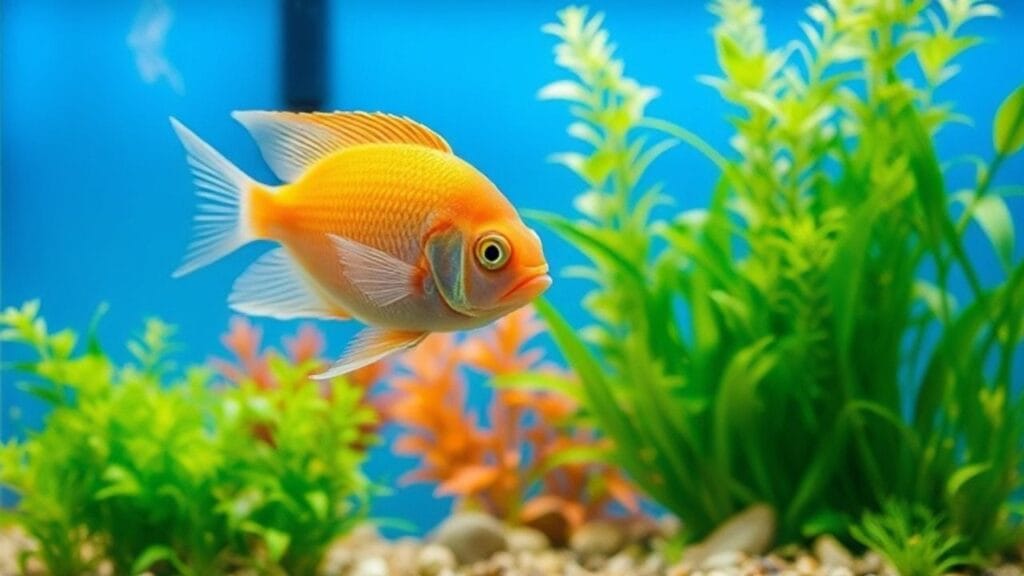Aquarium decorations can transform a plain fish tank into a vibrant underwater world. But when choosing between natural vs artificial aquarium decorations, you may wonder which is best for your fish and your setup. Both options offer unique benefits and potential drawbacks. In this comprehensive guide, we’ll explore these differences, provide insights on choosing the right decorations, and help you make an informed decision.
What Are Natural Aquarium Decorations?

Natural aquarium decorations come directly from the environment and mimic your fish’s natural habitat. Common examples include:
- Driftwood
- Rocks
- Live Plants
- Sand or Gravel Substrates
These materials not only look authentic but can also provide biological benefits to your fish. For instance, driftwood can release tannins that improve water quality and create hiding spots for shy species.
Benefits of Natural Decorations
- Mimics Natural Habitat
Fish feel more at home in an environment that resembles their native surroundings. Live plants, rocks, and wood recreate the rivers, lakes, or oceans they come from. - Improves Water Quality
Live plants absorb carbon dioxide and release oxygen, promoting healthier water for fish. - Encourages Natural Behavior
Fish often use natural decorations to hide, spawn, or explore, which reduces stress. - Aesthetic Appeal
Natural decorations add a timeless beauty and authenticity to the aquarium.
Drawbacks of Natural Decorations
- Higher Maintenance
Live plants and organic materials like driftwood may require regular cleaning or trimming to avoid overgrowth or decay. - Risk of Parasites or Harmful Bacteria
Without proper treatment, natural items may introduce unwanted organisms into the tank.
What Are Artificial Aquarium Decorations?
Artificial decorations are man-made items designed to resemble natural elements or add a creative touch to aquariums. They include:
- Plastic or Silk Plants
- Resin Ornaments
- Colorful Gravel
- Themed Decor (castles, treasure chests, etc.)
Artificial decorations often appeal to hobbyists who prioritize convenience and low maintenance.
Benefits of Artificial Decorations
- Low Maintenance
Unlike live plants or organic materials, artificial items don’t decay or require frequent cleaning. - Durability
They maintain their color and shape over time, making them long-lasting additions to your tank. - Customizable Themes
You can create whimsical, colorful, or themed setups that wouldn’t be possible with natural materials. - No Risk of Parasites
Artificial items are typically sterile and free from bacteria or pests.
Drawbacks of Artificial Decorations
- Lacks Biological Benefits
Unlike live plants, artificial decorations don’t contribute to water quality or the biological balance of the tank. - Less Authentic Appearance
Some artificial pieces can look unnatural and disrupt the aesthetic harmony of the aquarium. - Sharp Edges or Toxic Paints
Poorly made artificial items may harm fish or leach harmful chemicals into the water.
Comparing Natural vs Artificial Aquarium Decorations
The following table highlights key differences between natural and artificial decorations:
| Aspect | Natural Decorations | Artificial Decorations |
|---|---|---|
| Aesthetics | Authentic and earthy look | Customizable and creative themes |
| Biological Benefits | Improves water quality and supports ecosystem | No biological contribution |
| Maintenance | Requires regular upkeep | Low maintenance |
| Safety | Risk of introducing parasites | Sterile but may have sharp edges or toxins |
| Durability | Prone to decay over time | Long-lasting |
How to Choose the Right Decorations for Your Aquarium
1. Understand Your Fish’s Needs
Different fish species have unique requirements. For example:
- Cichlids prefer rocky structures for hiding.
- Tetras and Gouramis thrive in planted tanks with subdued lighting.
- Goldfish do well with open spaces and durable artificial items since they tend to nibble on plants.
2. Consider Your Time and Resources
If you’re a beginner or have limited time for tank maintenance, artificial decorations may be more practical. Advanced hobbyists with a passion for aquascaping often prefer natural setups.
3. Assess Your Tank Size
Natural decorations, such as driftwood or large rocks, may take up significant space in smaller tanks. Artificial items are often more compact and versatile.
Combining Natural and Artificial Decorations
You don’t have to choose one over the other. A mixed approach offers the best of both worlds. For example:
- Use live plants alongside artificial rocks for a natural look with reduced maintenance.
- Combine natural driftwood with themed decor for a creative yet authentic setup.
This approach allows you to balance aesthetics, functionality, and maintenance needs.
Tips for Maintaining Aquarium Decorations
For Natural Decorations:
- Treat Driftwood and Rocks: Boil or soak them to remove harmful organisms.
- Trim Live Plants: Prevent overgrowth and ensure they don’t block light or filters.
- Monitor for Decay: Remove decaying plants or wood to avoid water contamination.
For Artificial Decorations:
- Clean Regularly: Use a brush or aquarium-safe cleaner to remove algae buildup.
- Inspect for Damage: Check for chipped paint or sharp edges that could harm fish.
- Avoid Overcrowding: Don’t overcrowd the tank with decorations, as this can limit swimming space.
Real-Life Experiences
As an aquarist for over a decade, I’ve tried both natural and artificial setups. While a fully natural tank offered incredible biological benefits, it required weekly upkeep. On the other hand, an artificial setup was easier to manage but lacked the vibrancy of a live ecosystem. Eventually, I found success in combining both, creating a balanced and visually appealing aquarium that catered to my fish’s needs.
Conclusion
Choosing between natural vs artificial aquarium decorations depends on your fish’s needs, your aesthetic preferences, and the time you can dedicate to maintenance. Natural decorations offer authenticity and biological benefits, while artificial items provide convenience and creative freedom. A balanced combination of both often proves to be the best solution for aquarists of all levels.
By understanding the pros and cons of each, you can create a stunning, safe, and functional environment for your fish to thrive.
